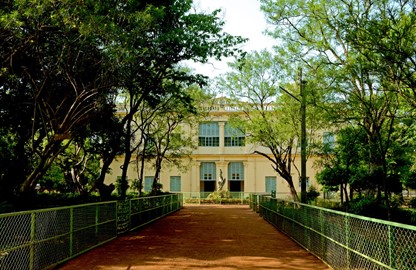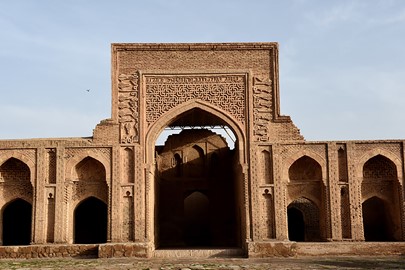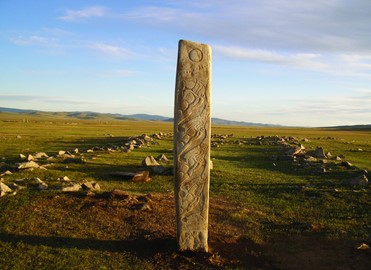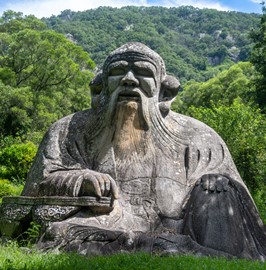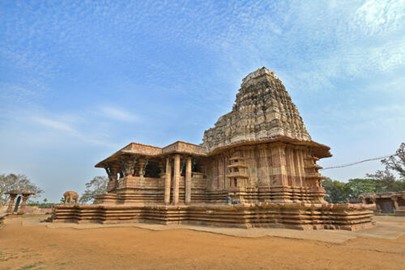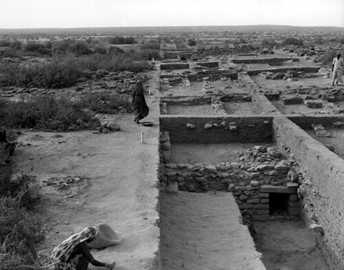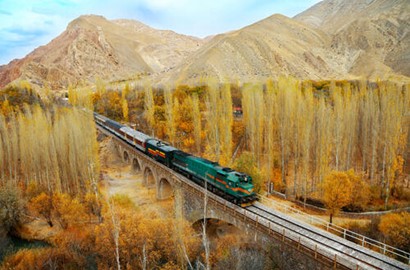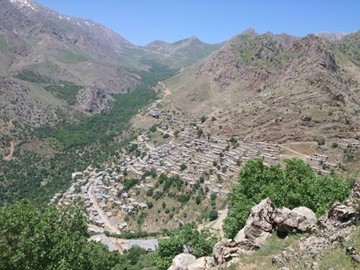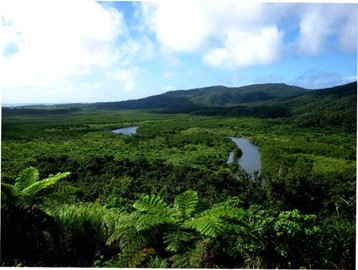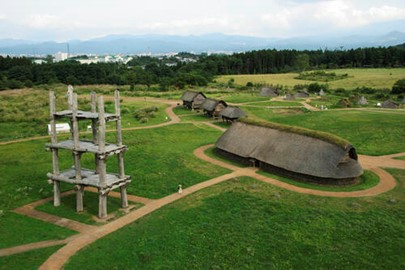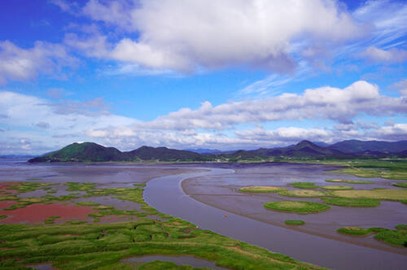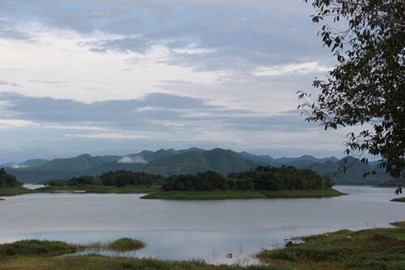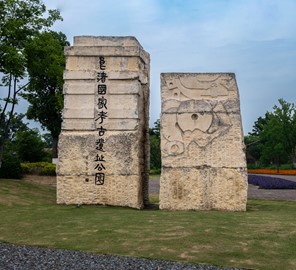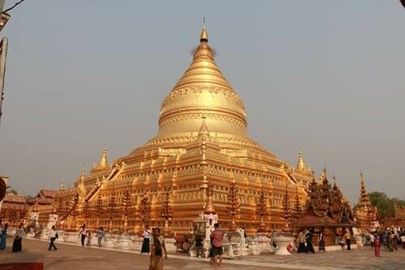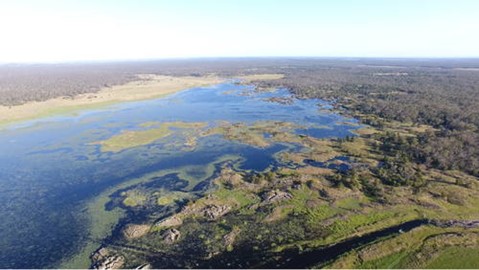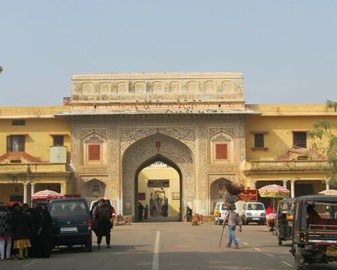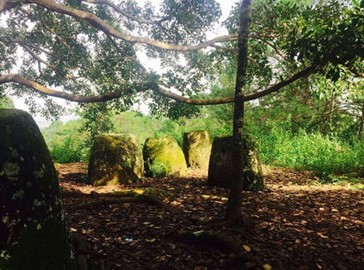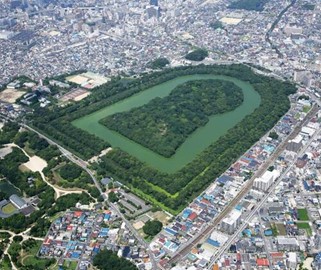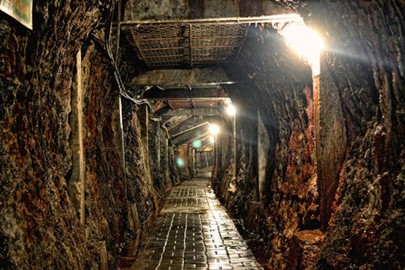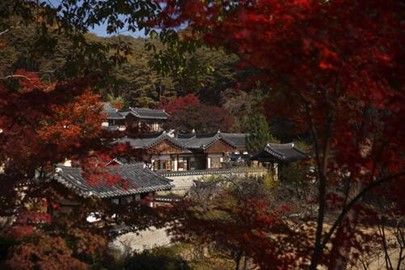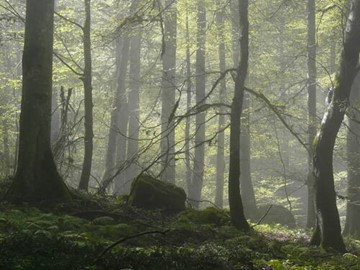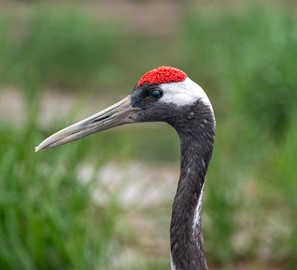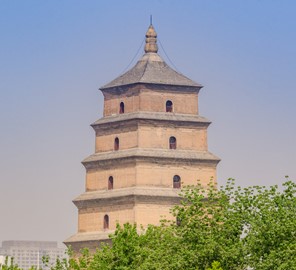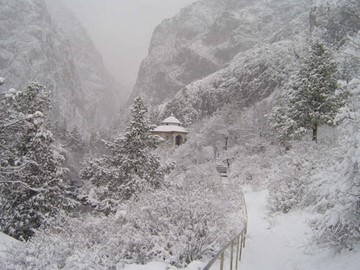region :: asia and the pacific
Santiniketan
Santiniketan, a UNESCO World Heritage site in India’s West Bengal, is a 37-hectare cultural landscape founded by poet Rabindranath Tagore in 1901 as an experimental school, later evolving into Visva-Bharati University by 1921. Recognized in 2023, it blends traditional Indian architecture with nature-inspired open-air classrooms, reflecting Tagore’s vision of holistic education rooted in creativity, humanism, and harmony with the environment. This rural retreat, surrounded by ashram-style buildings and artis... Read More
Persian Caravanserai
The Persian Caravanserai, a UNESCO World Heritage site in Iran, comprises 54 historic roadside inns spanning the country, recognized in 2023 for their role along ancient trade routes from the Achaemenid era (550-330 BCE) to the 19th century. These fortified structures, strategically spaced 30-40 kilometers apart, feature robust brick and stone architecture with courtyards, stables, and domed halls, offering shelter to travelers and merchants. Exemplifying Persian engineering and cultural exchange, sites lik... Read More
Deer Stone Monuments
The Deer Stone Monuments, a UNESCO World Heritage site in Mongolia, are ancient megaliths scattered across the northern steppes, dating from 1200 to 600 BCE. Recognized in 2023, these 1- to 4-meter-tall stones, adorned with stylized deer carvings, are part of Bronze Age complexes in the Khangai Ridge, including burial mounds (khirgisuurs) and sacrificial altars. Found primarily at sites like Uushigiin Övör and Khoid Tamir, they reflect the ceremonial and funerary practices of Eurasian nomads, offering a uni... Read More
Gaya Tumuli
The Gaya Tumuli, a UNESCO World Heritage site in South Korea, comprises seven clusters of ancient burial mounds across Gyeongsang Province, dating from the 1st to 6th centuries CE during the Gaya Confederacy. Recognized in 2023, these 35- to 65-meter-wide tumuli, built for elite rulers, feature stone-lined chambers and artifacts like gold jewelry and armor, reflecting Gaya’s sophisticated culture and trade networks. Set in urban and rural landscapes, they illustrate a distinct funerary tradition on the Kore... Read More
Quanzhou
Quanzhou: Emporium of the World in Song-Yuan China, a UNESCO World Heritage site in Fujian Province, recognized in 2021, is a historic port city that thrived as a global trade hub from the 10th to 14th centuries during the Song and Yuan dynasties. Spanning 22 sites—including docks, pagodas, mosques, and archaeological remains—it showcases maritime infrastructure and a multicultural legacy blending Chinese, Islamic, and Hindu influences. This 540-hectare area highlights Quanzhou’s pivotal role in the Maritim... Read More
Ramappa Temple
The Ramappa Temple, a UNESCO World Heritage site in India, recognized in 2021, is a 13th-century sandstone shrine in Telangana dedicated to Lord Shiva, built under the Kakatiya dynasty. Known officially as Rudreswara Temple, it features intricate carvings, floating bricks, and a star-shaped sanctum, showcasing advanced medieval engineering and artistic mastery. Named after its architect, Ramappa, this well-preserved structure exemplifies South Indian temple architecture, reflecting the Kakatiya era’s cultur... Read More
Dholavira
Dholavira: a Harappan City, a UNESCO World Heritage site in India, recognized in 2021, is an ancient urban settlement in Gujarat from the Harappan Civilization, thriving between 3000 and 1500 BCE. This well-preserved archaeological site features sophisticated water management systems, a fortified citadel, and large-scale structures, reflecting advanced urban planning and engineering. One of the five largest Indus Valley cities, Dholavira offers a rare glimpse into Bronze Age life, trade, and culture in the ... Read More
Trans Iranian Railway
The Trans-Iranian Railway, a UNESCO World Heritage site in Iran, recognized in 2021, is a historic rail network completed in 1938 under Reza Shah, linking the Persian Gulf to the Caspian Sea. Spanning diverse terrains—mountains, deserts, and valleys—it features over 174 bridges, 186 tunnels, and bold engineering feats like the Three Golden Lines spiral. Built to boost trade and modernization, this 20th-century marvel reflects Iran’s industrial ambition and technical prowess, connecting remote regions while ... Read More
Hawraman/Uramanat
Hawraman/Uramanat, a UNESCO World Heritage site in Iran, recognized in 2021, is a rugged mountainous region in western Iran preserving the ancient cultural landscape of the Kurdish Hawrami people. Featuring terraced villages, dry-stone architecture, and sacred sites dating back over 3,000 years, it reflects a harmonious blend of human adaptation, agriculture, and pastoralism in a harsh environment. This living heritage, with its unique traditions and stepped settlements, showcases Iran’s diverse cultural id... Read More
Amami Oshima Island
Amami-Oshima Island, a UNESCO World Heritage site in Japan, recognized in 2021, is a subtropical island in the Ryukyu Archipelago renowned for its exceptional biodiversity and ancient ecosystems. Part of a four-island listing with Tokunoshima, Iriomote, and northern Okinawa, it hosts unique species like the Amami rabbit and Ryukyu long-tailed giant rat, thriving in dense laurel forests and mangroves. This pristine natural haven reflects millions of years of ecological isolation, offering a living testament ... Read More
Jomon Prehistoric Sites
The Jomon Prehistoric Sites, a UNESCO World Heritage site in Japan, recognized in 2021, are 17 archaeological locations in northern Japan showcasing the Jomon culture, a hunter-gatherer society from 13,000 to 300 BCE. Featuring settlements, burial sites, and ritual mounds like Sannai-Maruyama, these sites reveal advanced pottery, early sedentism, and spiritual practices unique to the Jomon period. Spanning millennia, they offer a rare window into Japan’s pre-agrarian past, highlighting a sophisticated lifes... Read More
Getbol, Korean Tidal Flats
Getbol, Korean Tidal Flats, a UNESCO World Heritage site in South Korea, recognized in 2021, are expansive coastal wetlands along the Yellow Sea, celebrated for their ecological richness and geological significance. Formed by tidal cycles, these mudflats in Seocheon, Gochang, Shinan, and Boseong host diverse species like migratory birds and rare benthic organisms, thriving in a dynamic intertidal zone. A vital stopover on the East Asian-Australasian Flyway, they highlight Korea’s natural heritage and the in... Read More
Kaeng Krachan Forest
Kaeng Krachan Forest, a UNESCO World Heritage site in Thailand, recognized in 2021, is a pristine tropical forest along the Tenasserim Range, celebrated for its rich biodiversity and rugged terrain. Home to rare species like the Siamese crocodile, clouded leopard, and over 400 bird species, it thrives in a moist evergreen ecosystem shaped by steep slopes and rivers. Bordering Myanmar, this ecological sanctuary reflects Thailand’s natural heritage, offering a vital refuge for wildlife and a testament to Sout... Read More
Liangzhu
The Archaeological Ruins of Liangzhu City, a UNESCO World Heritage site in China, recognized in 2019, are a 5,300-year-old urban settlement in Zhejiang Province, showcasing the Neolithic Liangzhu culture (3300-2300 BCE). Featuring a sophisticated city layout with moats, walls, a palace, and intricate jade artifacts, it reflects early state formation and advanced hydraulic engineering in East Asia. This well-preserved site offers a rare glimpse into China’s ancient urban civilization, highlighting its cultur... Read More
Bagan
Bagan, a UNESCO World Heritage site in Myanmar, recognized in 2019, is an ancient city along the Irrawaddy River, famed as the capital of the Pagan Kingdom from the 9th to 13th centuries. Its vast plain features over 3,500 Buddhist temples, pagodas, and monasteries, showcasing intricate brick architecture and religious art from a golden era of Burmese culture. This sacred landscape reflects Myanmar’s historical devotion and architectural prowess, offering a stunning testament to a once-thriving medieval civ... Read More
Budj Bim
Budj Bim, a UNESCO World Heritage site in Australia, recognized in 2019, is a cultural landscape showcasing one of the world’s oldest aquaculture systems, developed by the Gunditjmara people over 6,600 years ago. Featuring stone channels, weirs, and traps built along ancient lava flows, it enabled sustainable eel harvesting and supported permanent settlements with circular stone huts. The first Australian site listed solely for its Aboriginal cultural significance, Budj Bim reflects the Gunditjmara’s ingenu... Read More
Jaipur
Jaipur City, Rajasthan, a UNESCO World Heritage site in India, recognized in 2019, is an 18th-century planned city founded by Maharaja Sawai Jai Singh II, famed as the 'Pink City' for its rose-hued buildings. Its grid layout, blending Hindu and Mughal architecture, features landmarks like the Hawa Mahal and City Palace, reflecting innovative urban design and astronomical precision with the Jantar Mantar observatory. This vibrant capital showcases India’s royal heritage and cultural synthesis, embodying a un... Read More
Xiengkhuang – Plain of Jars
Xiengkhuang – Plain of Jars, a UNESCO World Heritage site in Laos, recognized in 2019, is a mysterious archaeological landscape featuring over 2,100 giant stone jars scattered across the Xiengkhuang Plateau, dating from 500 BCE to 500 CE. Likely used for funerary rituals by an Iron Age culture, these hollowed megaliths, some weighing up to 10 tons, dot hilltops and valleys amid ancient settlements. This enigmatic site reflects Laos’ prehistoric past, offering a haunting glimpse into a lost civilization’s be... Read More
Mozu Tombs
The Mozu Tombs, a UNESCO World Heritage site in Japan, recognized in 2019, are a cluster of ancient burial mounds in Osaka from the Kofun period (3rd to 7th centuries CE), including the massive Daisen Kofun, one of the world’s largest tombs. Shaped like keyholes, circles, and squares, these earthen monuments, surrounded by moats, reflect the hierarchical society and funerary traditions of early Japanese rulers. This well-preserved necropolis showcases Japan’s ancient engineering and cultural heritage, offer... Read More
Ombilin Coal Mine
The Ombilin Coal Mine, a UNESCO World Heritage site in Indonesia, recognized in 2019, is a colonial-era mining complex in West Sumatra developed by the Dutch from 1892 to extract high-quality coal. Featuring a company town, railway, and mining facilities set in a volcanic landscape, it reflects advanced industrial planning and forced labor history under colonial rule. This site showcases Indonesia’s early industrial heritage, blending European technology with local adaptation in a remote tropical region.
Seowon, Neo Confucian Academies
Seowon, Korean Neo-Confucian Academies, a UNESCO World Heritage site in South Korea, recognized in 2019, are nine historic learning centers from the Joseon Dynasty (15th to 19th centuries), exemplifying Neo-Confucian ideals. Nestled in rural landscapes, these wooden complexes, like Sosu Seowon, blend architecture with nature, featuring lecture halls, shrines, and libraries that fostered scholarship and ethics. This network reflects Korea’s intellectual heritage, showcasing a unique educational tradition tha... Read More
Hyrcanian Forests
The Hyrcanian Forests, are ancient woodlands renowned for their rich biodiversity and unique ecosystem. Dating back millions of years, these lush, temperate forests host a variety of rare plant and animal species, some of which are endemic. The site's dramatic landscapes, with steep slopes and deep valleys, contribute to its ecological significance and natural beauty, making it a vital conservation area and a testament to natural heritage.
Migratory Bird Sanctuaries
The Migratory Bird Sanctuaries, a UNESCO World Heritage site in China, protect the world’s largest intertidal mudflat system, serving as a critical habitat for millions of migratory birds along the East Asian-Australasian Flyway. This vital ecosystem supports numerous endangered species, including the spoon-billed sandpiper and red-crowned crane, offering essential stopover points for resting and feeding during their long migrations. Recognized in two phases, with the first in 2019 and an extension in 2024,... Read More
Silk Roads Chang'an Tianshan Corridor
Silk Roads, a UNESCO World Heritage site in China, Kazakhstan, and Kyrgyzstan, recognized in 2014, is a segment of the ancient trade network linking Chang’an-Tianshan corridors, active from the 2nd century BCE to the 16th century CE. Featuring 33 sites like caravan cities, Buddhist caves, and fortifications, it reflects the exchange of goods, ideas, and cultures across deserts and mountains. This transnational site showcases Central Asia’s pivotal role in connecting East and West, preserving a legacy of his... Read More
Western Tien Shan
Western Tien-Shan, a UNESCO World Heritage site in Kazakhstan, Kyrgyzstan, and Uzbekistan, recognized in 2016, is a rugged mountain range in Central Asia, renowned for its biodiversity and dramatic landscapes. Featuring peaks, glaciers, and alpine meadows, it harbors rare species like the snow leopard and ancient fruit forests tied to Silk Road origins. This transnational site reflects the region’s natural heritage, showcasing a pristine ecological and geological treasure across borders.
